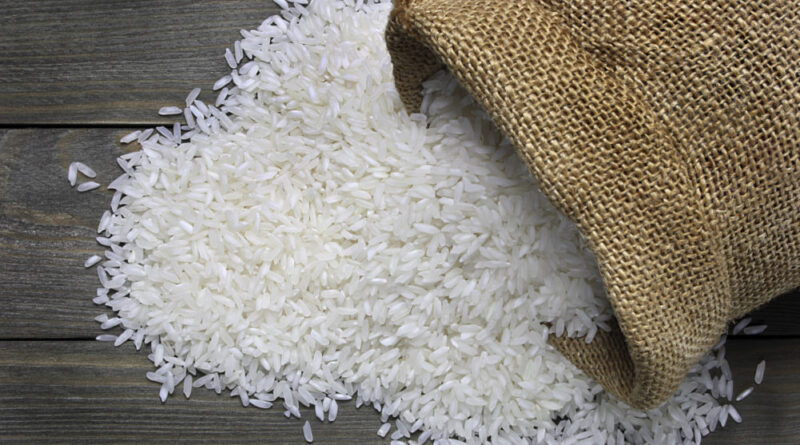Nepal: Rice prices hit record high amid Indian ban
Rice prices surged to their highest by Rs800 per kg per 25 kg of bag over a year in the Nepali market, according to the market analysis report of the National Consumer Forum.
The record price rise has been attributed to India’s restriction on exports of non-basmati white rice. India is the world’s largest rice exporter, accounting for up to 40 percent of rice in the world market.
The forum said that food inflation continues to simmer in Nepal largely due to higher rice prices and other food items.
In July last year, the Indian government banned the export of non-Basmati white rice to keep its food reserve intact amid the threat of El Nino disruptions.
Before the ban, the price of pearl jeera masino and other varieties was Rs1,600 per 25kg bag, which now costs Rs2,400. Similarly, other varieties, too, have gone up significantly, according to retailers.
Again in August, the southern neighbour imposed a 20 percent duty on parboiled rice exports.
According to the forum, the price of sugar, which declined to Rs90 per kg immediately after the Tihar festival in November, has again reached Rs110 per kg in retail. In November last year, New Delhi allowed the export of 25,000 tonnes of sugar to Nepal on a quota basis until September 30, 2024. However, the Nepal government has not been able to import the sugar.
Similarly, the prices of wheat flour and refined flour have increased by around 30 percent in the market.
“The domestic production of food items like rice, wheat, and sugar doesn’t fulfil the country’s requirement so we depend on imports from India. If India imposes a ban, prices in Nepal will go up under different pretexts,” said Prem Lal Maharjan, president of the National Consumer Forum.
Government intervention is much needed to control the increasing prices, he said.
“Also Nepal’s government failed to negotiate with India to import food commodities on a quota basis,” Maharjan said. Despite India allowing the export of food items on a quota basis, the Nepal government has failed to respond promptly.”
“Such weakness makes the market volatile and impacts the economy largely.”
Nepali traders attributed the recent food price hikes to the ongoing general elections in India.
India is Nepal’s key trading partner and imports most food items from the southern neighbour. Traders said that given Nepal’s dependency on India, any protectionist policy adopted by New Delhi has a significant impact on Nepal’s market.
India will not remove export bans on rice, wheat, onion and sugar any time soon as the priority of Prime Minister Narendra Modi’s government is to cool domestic prices, Indian media reported.
“On top of everything, with frequent changes in governments and their preoccupation with political maneuverings, their involvement in the consumer market is zero,” Maharjan said.
“We have been writing to the relevant ministries to take these issues seriously,” he said. No matter how many times the government changes, the rising inflation and anomalies in the market never seem to bother anyone, he said.
On Sunday, the forum wrote to the Office of the Prime Minister requesting its intervention to tame market prices as they have affected the lives of every individual, especially people in the low-income bracket.
In a memorandum submitted to the Prime Minister’s Office, the forum said, “We would like to draw the attention of the prime minister that if the price hikes in the market are not taken seriously, they will greatly trouble the common man.”
According to Nepal Rastra Bank, the country’s central bank, the year-on-year consumer price inflation moderated to 4.82 percent in mid-March 2024, compared to 7.44 percent a year ago.
However, food prices are staggeringly high.
Under the food and beverage category, the price index of the spices sub-category increased by 28.17 percent, vegetables by 14.07 percent, pulses and legumes by 11.22 percent, cereal grains and their products by 7.35 percent and milk products and eggs by 7.11 percent in the review month.
The price index of the ghee and oil sub-category decreased by 11.79 percent in the review month.
This article has been republished from The Kathmandu Post.

